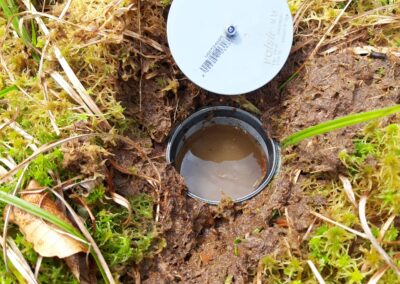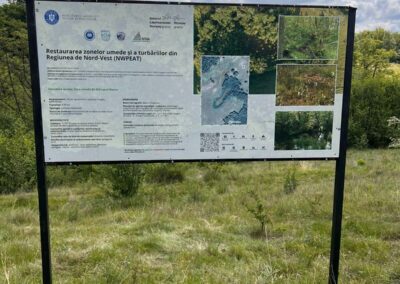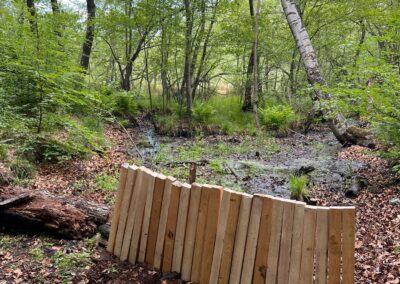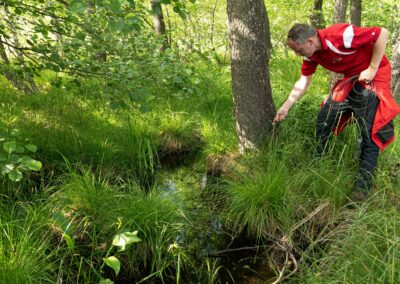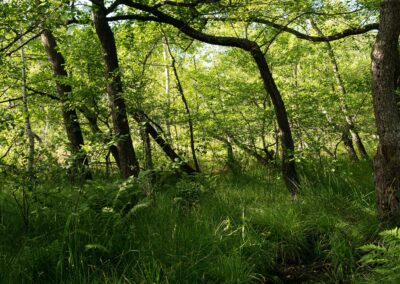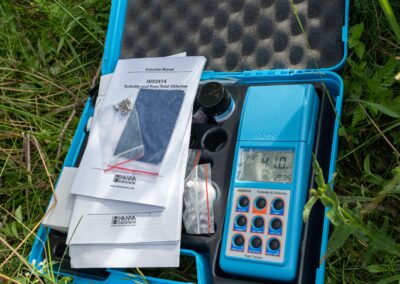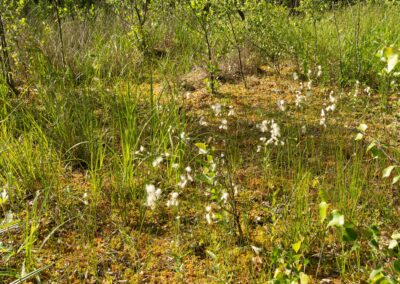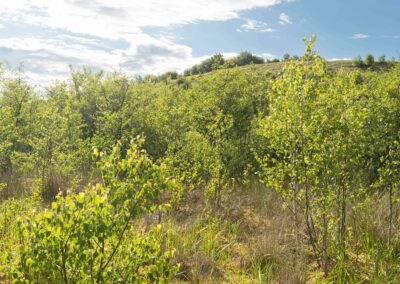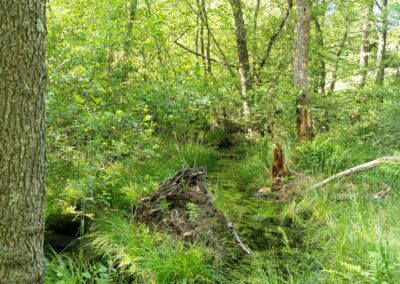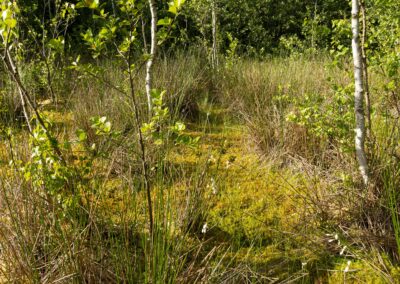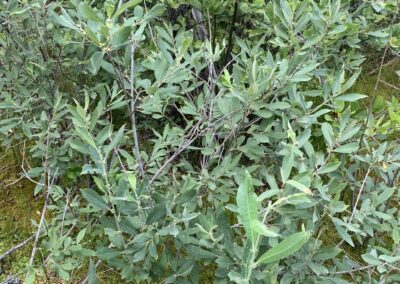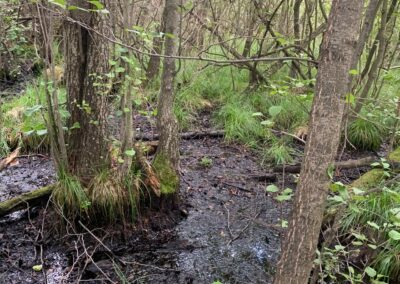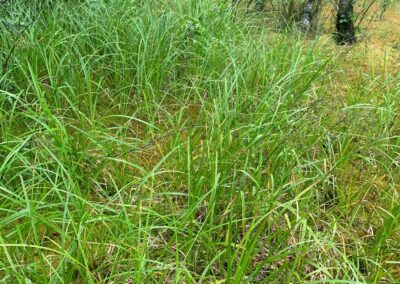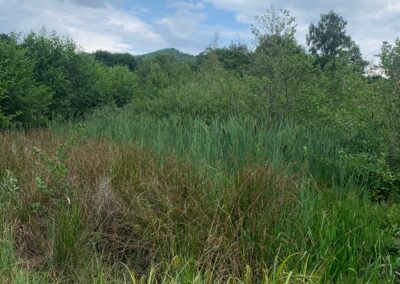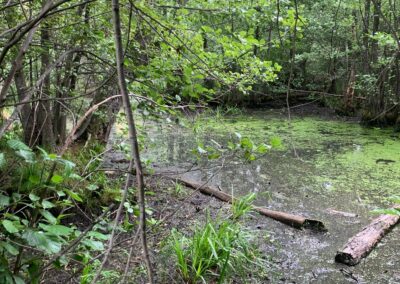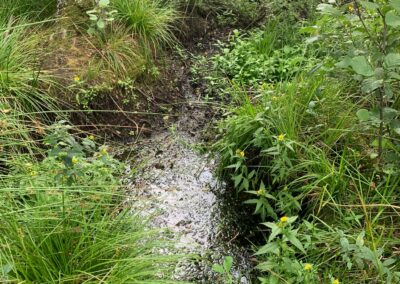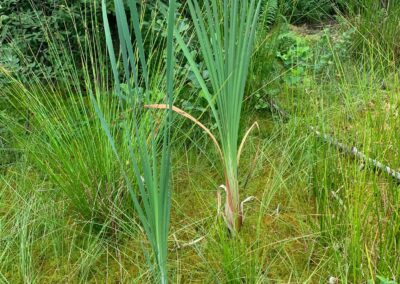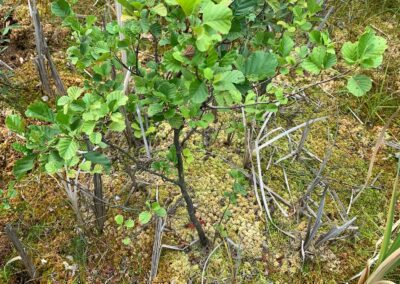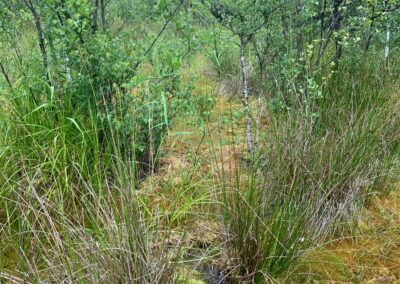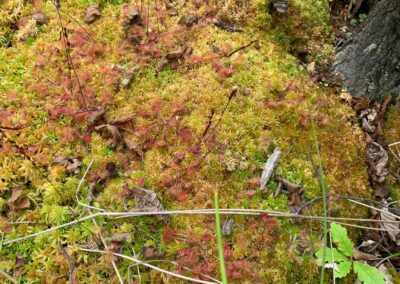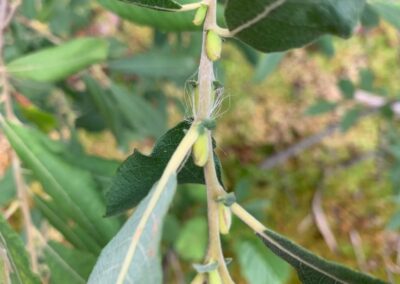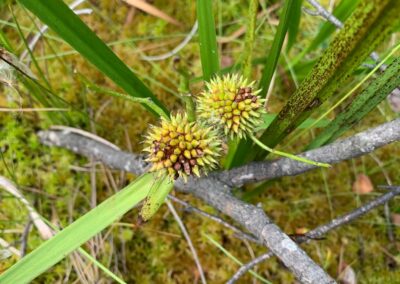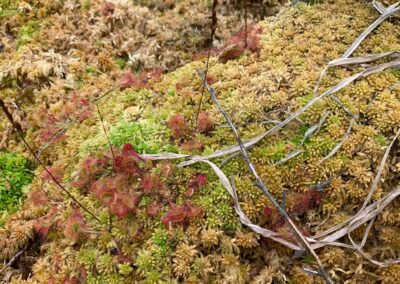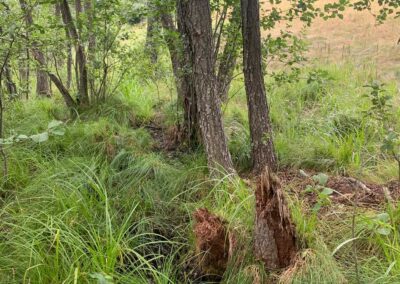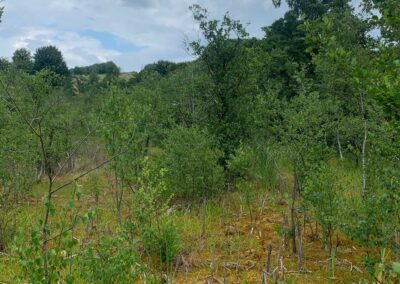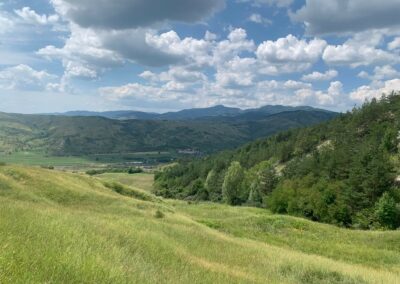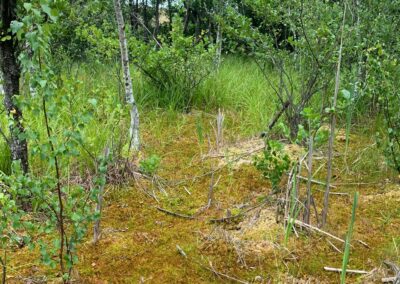Buzău – Lacul Manta
BZ-003-Lacul Manta Wetland
General information
Lacul Manta is located at 742 m, included in the Buzău Subcarpathians, and is located, administratively, in Chiojdu commune, Buzau county. From a biogeographical point of view, the ecosystem is integrated with the non-moral zone, the peatland being mesotrophic. The ecosystem area has 0,93 ha.
Restoration works
29.04.2024 – The last site where restoration work was carried out was Lacul Manta. Similar in specificities to Mlșatina de la Iaz, this peatland has an ecosystem with remarkable biodiversity. A blanket of dewberry (Drosera rotundifolia). Several restoration works have been implemented to maintain the peatland’s hydrological balance and ensure its tourist visibility: piezometers, placement of billboard and tourist signs and creating ecological dam.
Creating promotional materials
2.2024 – In order to promote the peatland ecosystems associated with the NWPEAT project, several distinct informational and promotional materials have been created for each peatland. In this regard, Lacul Manta Peatland has a digital brochure and a billboard that will be placed on-site.
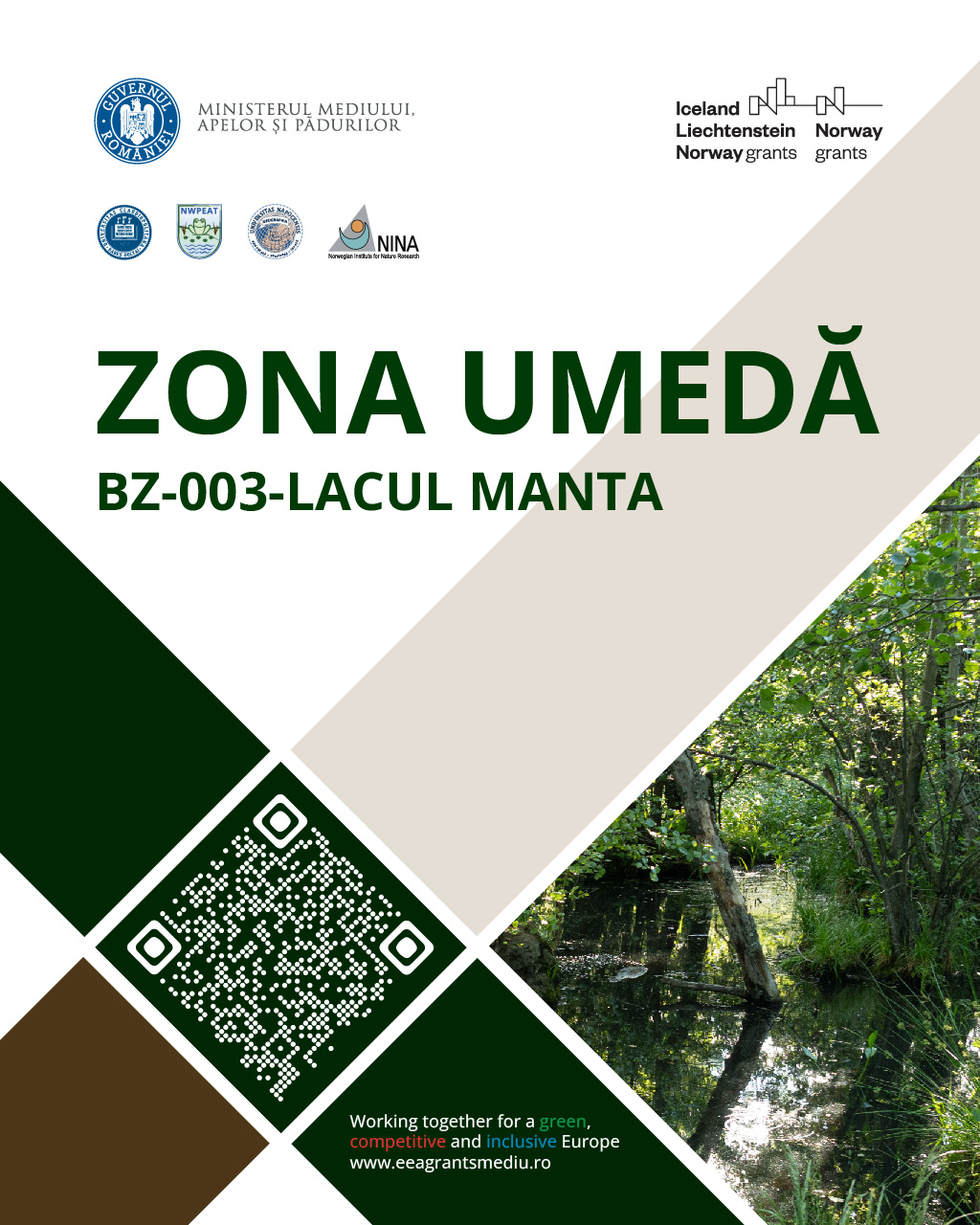
Restoration scheme – Lacul Manta
25.02.2022 – In order to restore the functions of the peatland ecosystem BZ-003-Lacul Manta, it is envisaged to achieve an optimal hydrological balance and improve the state of the ecosystem. The main pressures affecting this wetland are intensive drainage and grazing.
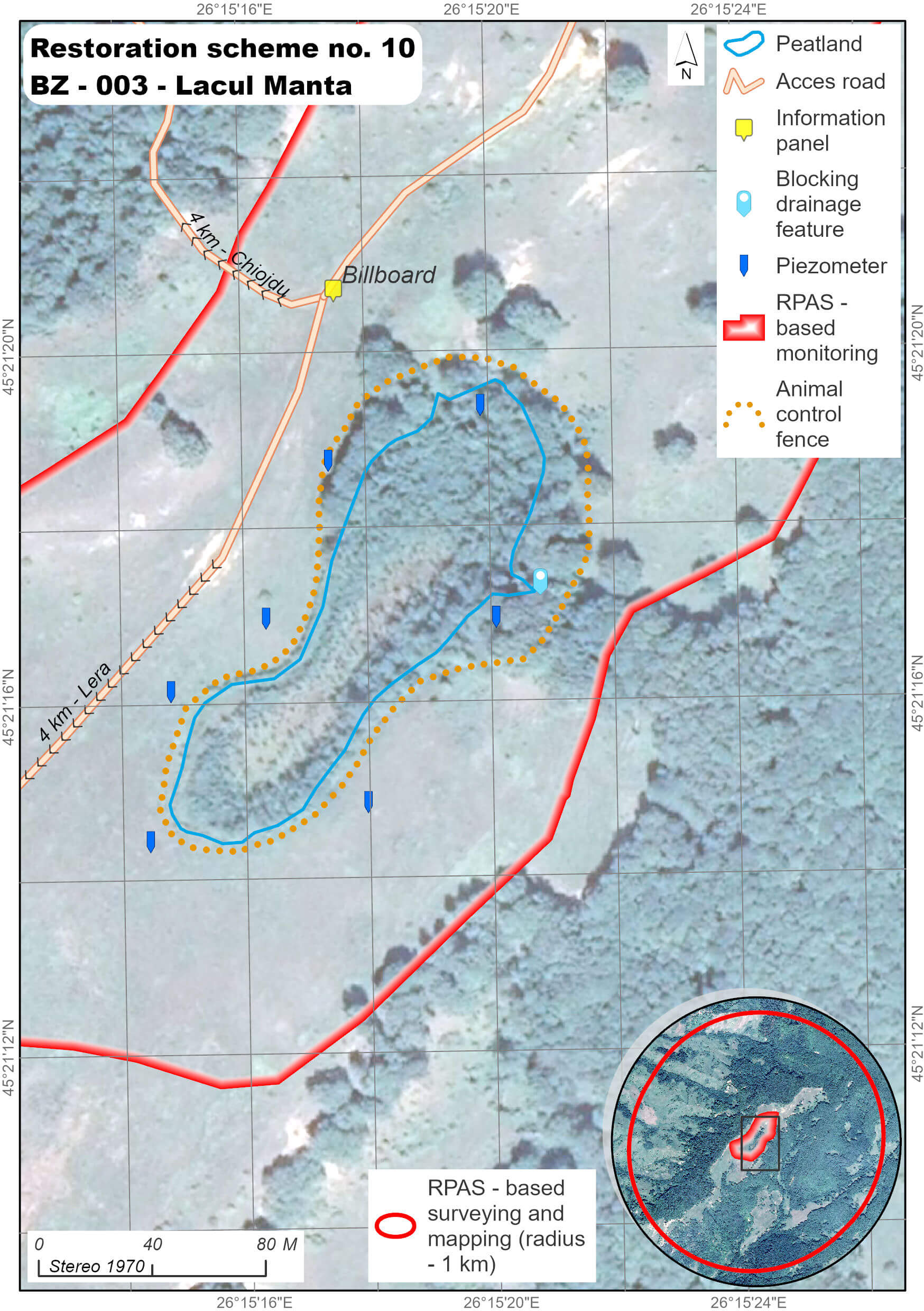
Field documentation – Lacul Manta
18.06.2022 – Much more accessible than the peatland from Lacul Sec, Lacul Manta is located in an area covered by forest vegetation, with a richer water budget than that which defines the peatland from Lacul Sec. Peatland restoration solutions, along with water sampling, photographs, and aerial images, were targeted following field documentation conducted by part of the NWPEAT project team.
Habitat mapping – Lacul Manta
25.08.2022 – Lacul Manta shelters two habitats:
- Habitat 7110* Active raised bogs, a priority habitat, located in the central part of the peatland. In terms of the species present, there is a very high abundance of Drosera rotundifolia, with Sphagnum and Carex rostrata;
- Habitat 91E0* Alluvial forests of Alnus glutinosa, Salix fragilis, and Salix alba, a well-individualized and preserved habitat.
